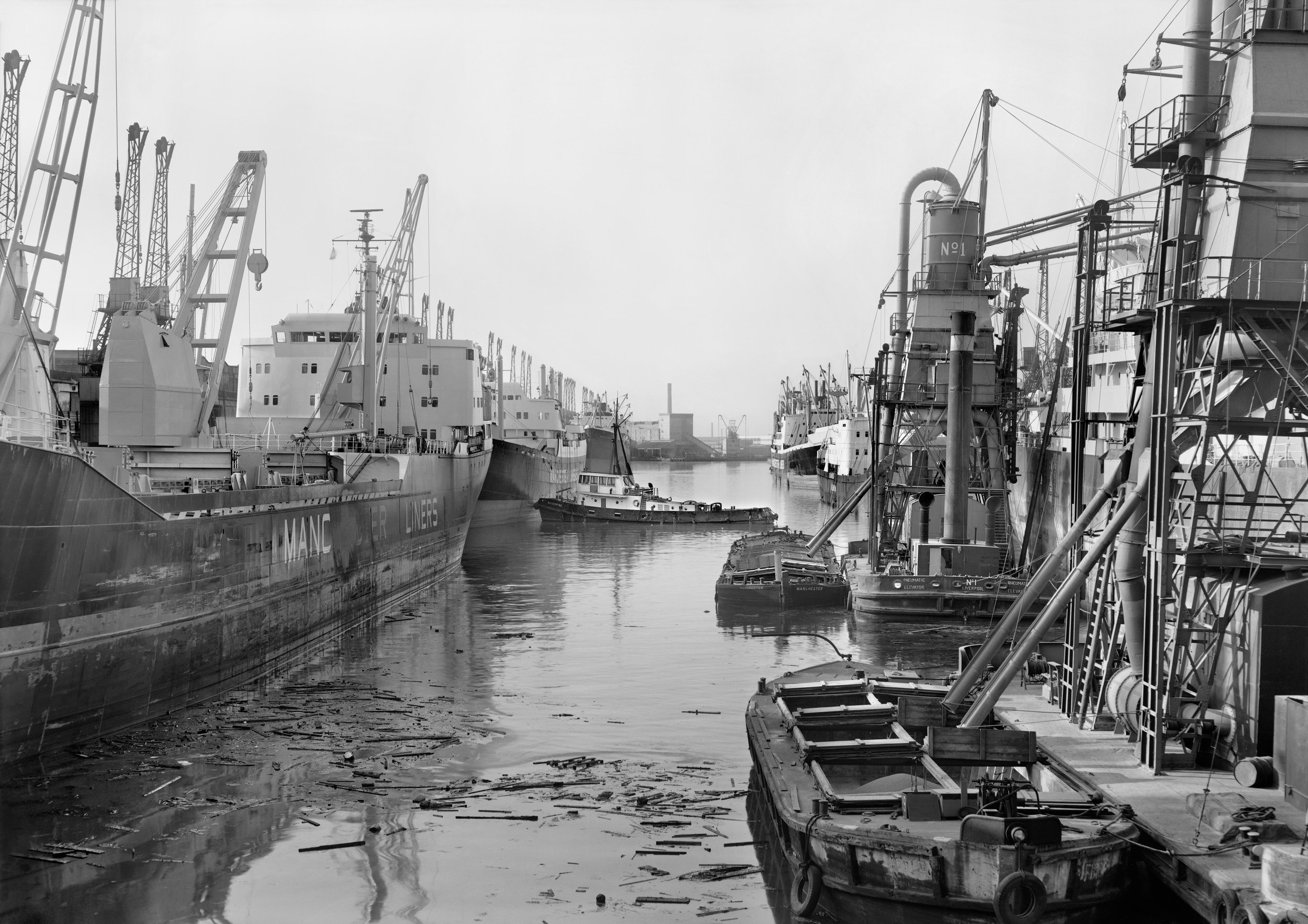9. From Salford to the World
Global Trade is Booming
Trade flowing in and out of the Ship Canal took time to grow, but grow it did… at its height Salford was the 3rd largest ‘sea’ port in the UK.

Photograph: The thriving Salford Docks with a Manchester Liner to the left.
The scale of trade was booming, and so was the variety of goods being transported.
From cotton and timber to grains, tea, fruit and cattle, the array of goods being transported across the world was staggering
The docks were playing a pivotal role in global trade and the Ship Canal had connected northern England to the rest of the world. At its height, around 5,000 people worked at Salford Docks, with dockers turning up daily to try and secure casual work.
Ships weighing up to 12,500 tonnes were soon delivering products from all over the world, especially America and Canada. Cargoes of cotton, grain and timber and commodities were brought from around the world, including tea, fruit, livestock, oil and petroleum. Exports included textiles, machinery, cars and locomotives.
Photograph: Shipment of bananas being unloaded at the Manchester Ship Canal.
The thriving Docks became increasingly sophisticated.
The development of Dock No.9, over on the MediaCity side, included steel reinforced concrete storage sheds with electrically powered cranes.
In the early 1900s Dock No.9 was considered to be the largest inland dock in the world. At the end of Dock No.9 stood a huge grain elevator, 168 feet high, capable of storing 40,000 tonnes of grain. The amount of freight carried by the canal peaked in 1958 at 18 million tonnes.
Photograph of the thriving Salford Docks with vessels large and small shipping goods across the world.
The tonnage handled by the Manchester Ship Canal ports grew and grew from 1.3 million tonnes in 1895 to a staggering 18 million tonnes in 1958.

The ‘Banana Corner’ at Salford Docks (credit Manchester Postcards).
The Manchester Spinner
Besides the 8,873 bales of cotton in her hold, the cargo included 100 barrels of cottonseed oil, 1,600 cases Liquozone, 300 sacks of tripoli, 250 tubs of lard, 169 barrels of soap, and 6,879 pieces of lumber. She had sailed from New Orleans on 31 May and arrived at Eastham Locks on 20 June 1905.
She would depart Eastham on 2 July bound for Buenos Aires. The Manchester Spinner shown here could carry 4,227 tonnes and was owned by Manchester Liners. The ship was torpedoed and sunk in January 1918.
Illustration: Unloading cotton from Galveston at Salford Docks by Frank L Emanuel in 1905 from A Salford Venice.
Amazing cargoes – banana boats
Think of Salford and you may not automatically think of tropical fruit, but one of the many things the docks became a major trading port for was bananas. By 1905 Salford Docks were a major port for the import of bananas with Elders & Fyffes operating a weekly delivery from Costa Rica in purpose built refrigerated ships.
Salford Docks even had its own dedicated banana room which opened in 1902 on Dock No.6.
Illustration: Unloading bananas from Costa Rica an illustration by Frank L Emanuel in 1905 from A Salford Venice for the Manchester Guardian Newspaper.






